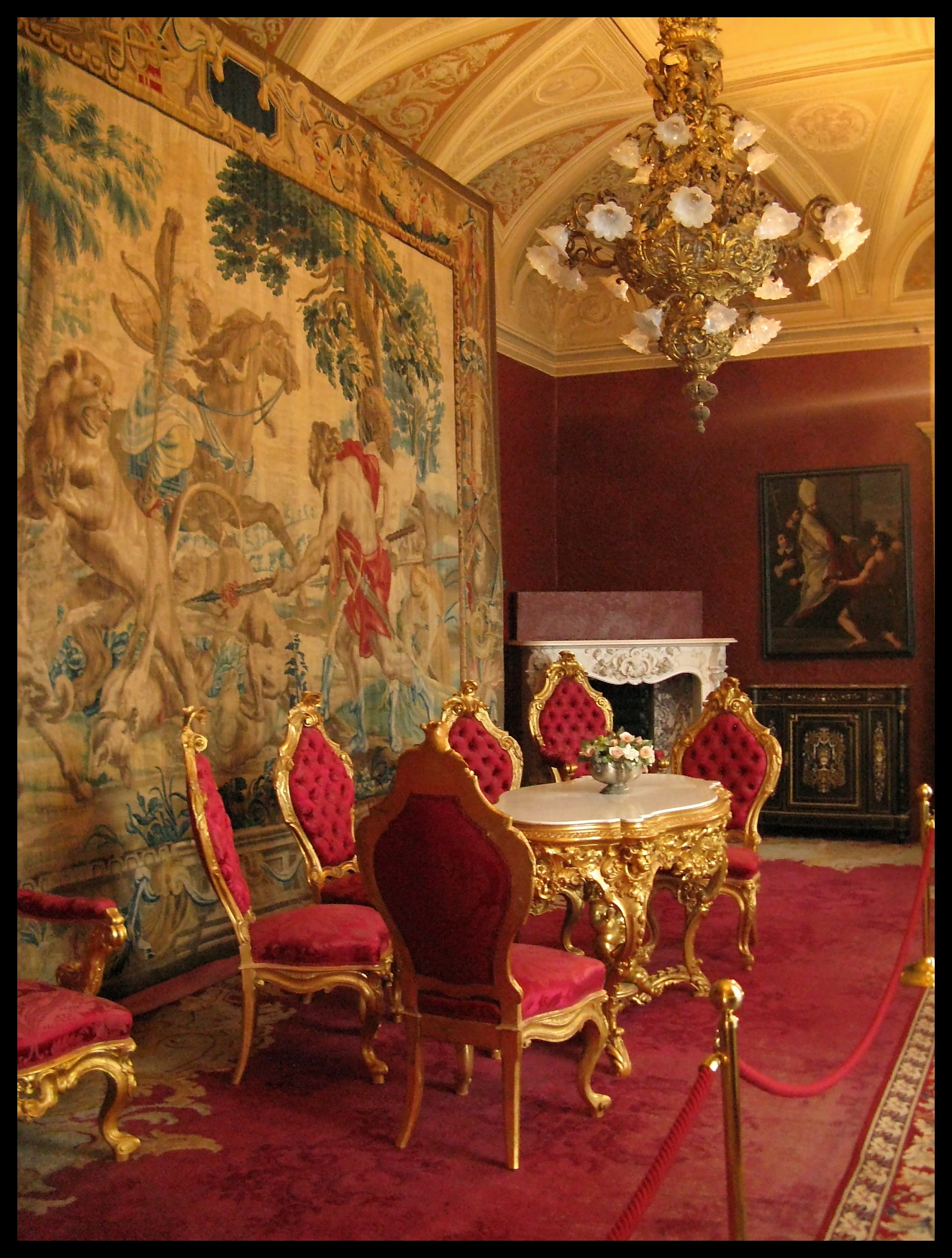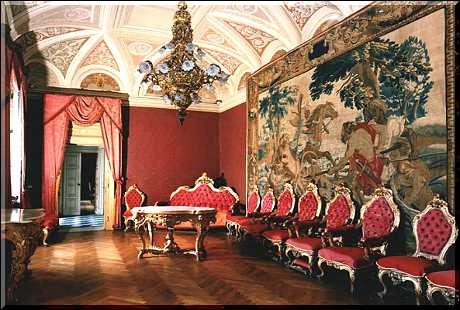 Deve il suo nome al colore delle tappezzerie e degli arredi in stile neorococò voluti dal proprietario W.E.J. Kees. Egli utilizzava questo ambiente come sala di ricevimento, destinazione d’uso anche dei precedenti proprietari Mornico che avevano edificato la villa nel Seicento.
Deve il suo nome al colore delle tappezzerie e degli arredi in stile neorococò voluti dal proprietario W.E.J. Kees. Egli utilizzava questo ambiente come sala di ricevimento, destinazione d’uso anche dei precedenti proprietari Mornico che avevano edificato la villa nel Seicento.
Il grande arazzo Settecentesco con imponente scena di caccia venne forse realizzato nelle officine di Anversa, attive fin dal secolo XIV. I dipinti invece sono da riferire ai proprietari successivi, i De Marchi, che acquistarono la dimora nel 1925 e portarono oggetti e mobili di gusto lombardo, che andarono ad affiancarsi a quelli di Kees.
Nella sala si conserva anche uno splendido tappeto Savonneire della seconda metà dell’ottocento con decori appositamente studiati per accompagnare gli arredi neorococò.
It owes its name to the color of the upholstery and furnishings in neo-rococo style desired by the owner W.E.J. Kees. He was using this environment as a reception room, intended use also Mornico of previous owners who had built the villa in the seventeenth century.
The great eighteenth-century tapestry with impressive hunting scene was probably made in the workshops of Antwerp, active since the fourteenth century. The paintings on the other hand are to be referred to subsequent owners, the De Marchi, who bought the house in 1925 and brought objects and furniture of Lombard style, that were placed alongside those of Kees.
In the room it is also a splendid carpet Savonneire the second half of the nineteenth century with specially designed patterns to accompany the neo-Rococo furniture.


